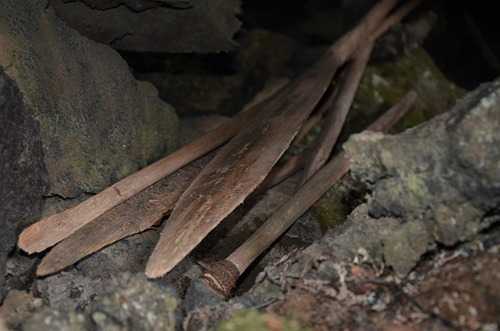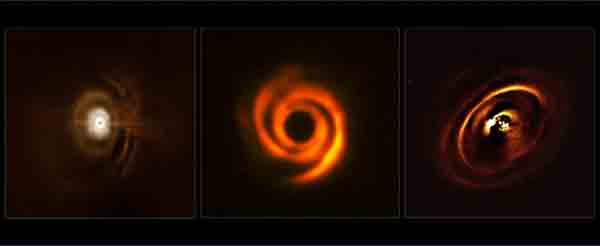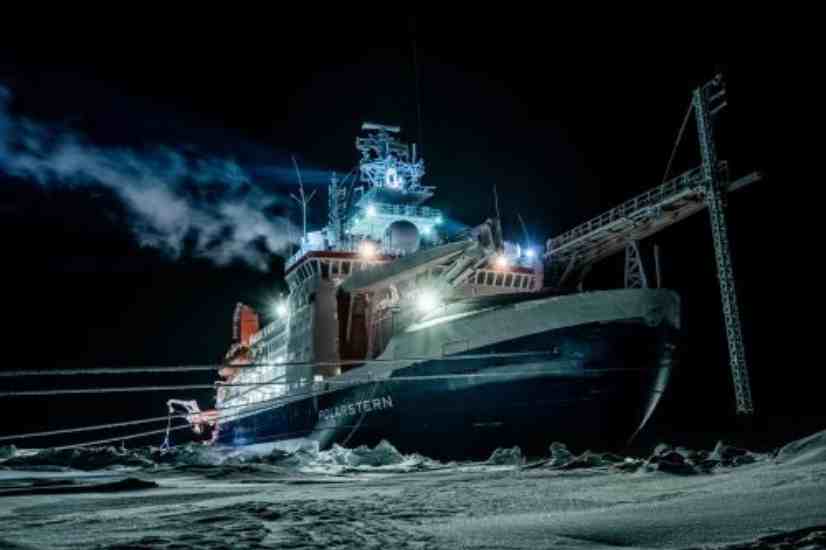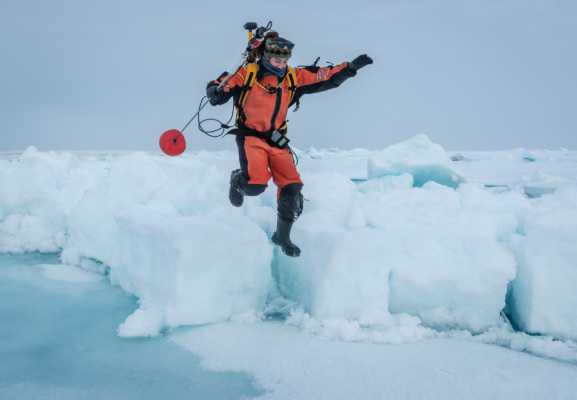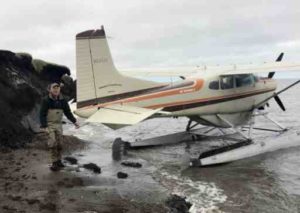
Forty years later, another plastic canary has come home to roost.
In August, University of Alaska Fairbanks scientist Ben Jones was hiking near Drew Point on the northern coast of Alaska. He noticed pilot Jim Webster walking toward him, while flicking a little yellow Frisbee his way.
That yellow plastic disc, about 7 inches round, had a message stamped on it: If the finder returned it to the Geophysical Institute at UAF, he or she would receive a $1 reward.
After his field season ended and he accomplished more pressing tasks, last week Jones carried the plastic disc back to the Geophysical Institute. He wanted the backstory more than the dollar.
The story of the disc goes back to the late 1970s, when oceanographer Brian Matthews released more than 1,500 of the discs on and sometimes through a hole beneath the sea ice that hugged the north coast of Alaska around Prudhoe Bay. Matthews hoped the drifting discs would show the possible pathways of oil spilled on or beneath the ice.
Matthews and his crews retrieved many on a helicopter mission a few seasons after they released the discs, but they did not find most of them.
Over the years, scientists and oilfield workers have returned a few they found on northern Alaska beaches to the Fairbanks campus home of the Geophysical Institute. The current record for long-distance travel went to a disc that two brothers found while playing on a beach in northern Scotland.
Oceanographer Tom Weingartner figured that yellow drifter had hitched a ride on an ice floe and sailed north. It then — for more than a decade — spun in a current known as the Beaufort Gyre near the North Pole. Eventually, the ice raft made it through Fram Strait. The ice melted, but the disc floated on, riding the North Atlantic drift, to the Outer Hebrides beach where the boys found it in 1997.
Back then, when the internet was becoming quite useful, the boys contacted someone at the Geophysical Institute. Matthews’ study was long since over (he wrote that his results suggested that oil spilled under ice in winter would tend to move toward the shore), but Roberta Greenlee of the Geophysical Institute sent the Scottish brothers an American dollar.
[content id=”79272″]
Just because the study is finished does not mean the plastic is. The disc Ben Jones carried in has weathered 40 arctic winters. It lasted much longer than the numbered oranges a scientist threw on the ice during a similar, unsuccessful experiment in 1972. Jones’s yellow plastic disc does not look much different than when Matthews released it on the pack ice in 1979.
The same cannot be said for the northern Alaska coast where the pilot found the disc. Jones and his colleagues have studied Drew Point for the past decade or so, watching colossal frozen chunks of tundra fall into the sea. In the most drastic year they measured, 2016, the sea consumed an average of 72 feet of a 5.5-mile stretch of coast around Drew Point.
Though Jones posed for a photo with the disc, he still has possession of the object that was dropped onto the ice the year he was born. He was happy to solve the mystery of where it came from, but is holding out on its return.
“Accounting for inflation, if the disc was deployed in 1979 with a stated award of $1, in today’s market the equivalent reward would be about $3.46,” he wrote in an email.
Since the late 1970s, the University of Alaska Fairbanks’ Geophysical Institute has provided this column free in cooperation with the UAF research community. Ned Rozell is a science writer for the Geophysical Institute.



